YUANCHEN FANG
“A Digital Symbiosis Unveiled: Exploring the Parasitic Relationship Between Technology and Society"
Summary
This project delves into "technological parasitism," examining how technology intertwines with individual behavior and life. Using parasitism as a metaphor, it discusses technology's evolution from a simple tool to an essential part of daily life. Combining theoretical exploration and practical application, the research uses modeling techniques to visualize this concept.
Recognizing constant changes in lifestyles and technology, the project adopts a speculative attitude towards future technological transformations. Inspired by rapid changes like the shift from keypad to touchscreen phones, speculative models were created to predict future forms of technological parasitism.
Four models based on common devices explore speculative and biological aspects of technology. These models aim to prompt reflection on our dependence on technology and inspire imagination about future possibilities.
The artworks blur the boundaries between technological parasitism and life, encouraging re-examination of our relationship with technology. They aim to inspire thoughts on the future of technology and provide a space for public reflection and imagination, promoting a deeper understanding of the relationship between technology and society.
Introduction
In today's digital era, technology has deeply embedded itself into our daily lives. From smartphones and computers to social media, these tools are not just a part of our lives but have become "parasites" that coexist with us. While we often perceive the convenience they bring, we sometimes fail to recognize our dependency on them and their negative impacts. The rapid evolution of technology, from keypad phones to touchscreen phones, reflects the significant changes that technology can bring in an instant. Therefore, understanding the "parasitic" relationship between technology and human behavior and social structures becomes crucial.
This research primarily explores the concept of "technological parasitism," focusing on how the creation of four parasitic models can convey the artist's understanding and experience to the audience. It emphasizes how technology deeply connects with individual behavior and life, generating new ideas. Current research mainly focuses on the functionality and convenience of technology, but there is a lack of study on its potential negative impacts and dependency. Thus, this research aims to fill this knowledge gap by critically discussing the transition of technology from a simple tool to an indispensable element and revealing its impact on daily life and conceptual changes. It also speculates on the future forms of parasitism.
The primary goal of this research is to critically analyze the phenomenon of technological parasitism by combining theoretical exploration and practical application, revealing its impact on individuals and society. By creating models and visual impacts of technological parasitism, the aim is to make people reflect on their dependency on technological devices and explore the possibilities of future technological development, providing new perspectives and imagination. Solving this issue is significant for promoting a deeper understanding of the relationship between technology and society.
I adopted a combination of theoretical exploration and practical application methods. By using modeling techniques, the abstract concept of technological parasitism is visualized, providing an intuitive way for the audience to understand and reflect. Modeling visualization is an important aspect of my work, allowing me to explore and create more deeply than before. Engaging the audience with the artistic modeling to generate thoughts and understanding is my free interpretation of technological parasitism.
The research process involved using physical models and visual interaction to enhance audience participation and understanding. The innovation of this research lies in using the unique metaphor of "parasitism" to explore the relationship between technology and humanity. Unlike existing studies that mainly focus on the convenience and functionality of technology, this research critically reveals the potential dependency and negative impacts of technology. By creating actual models, it provides a new perspective for the audience to understand the impact of technology on a deeper level and experience the connection between real life and imagined life, transitioning from two-dimensional to three-dimensional. For me, creating artworks is a world where I can always explore, have control over imagination, without any constraints or rules.
The following sections will discuss various aspects of this research in detail. This thesis is divided into five chapters. The first chapter, Understanding Technological Parasitism, reviews and analyzes existing research on technological parasitism, providing an initial understanding. The second chapter introduces the methodology, describing how the research combines theory and practice and why I transitioned from two-dimensional to three-dimensional, turning imagination into real models. The third chapter analyzes the forms and impacts of technological parasitism through specific cases, explaining my practical process and presenting four parasitic models based on technological devices, exploring their appearances and how I answered my research questions through practice. The fourth chapter, Flowing, is a visual concept video created with the technological parasitic models, continuing my interest in audience participation and interaction, exploring through strong visuals and music. The fifth chapter explores the potential impacts of technological parasitism on society and culture, imagining scenarios where parasitic devices could be marketed and purchased, and discusses future research directions and developments. The sixth chapter summarizes the research findings and reflects on how my research methods and practical outcomes address the research questions.
Research Questions
1. What kind of parasitic form will it exist in the future?
(Specifically, the parasitic forms of future technology refer to devices such as smartphones, smartwatches, earphones, and virtual reality equipment. This research will explore how these devices might exist in the future as parasitic forms.)
2. How does this relationship affect people's daily lives?
(This research will investigate how these parasitic forms of technology will change people's behavior patterns, social interactions, cognitive abilities, and other aspects, thus impacting daily life.)
The Appearance of Technological Parasitism

Details of parasitic device wear
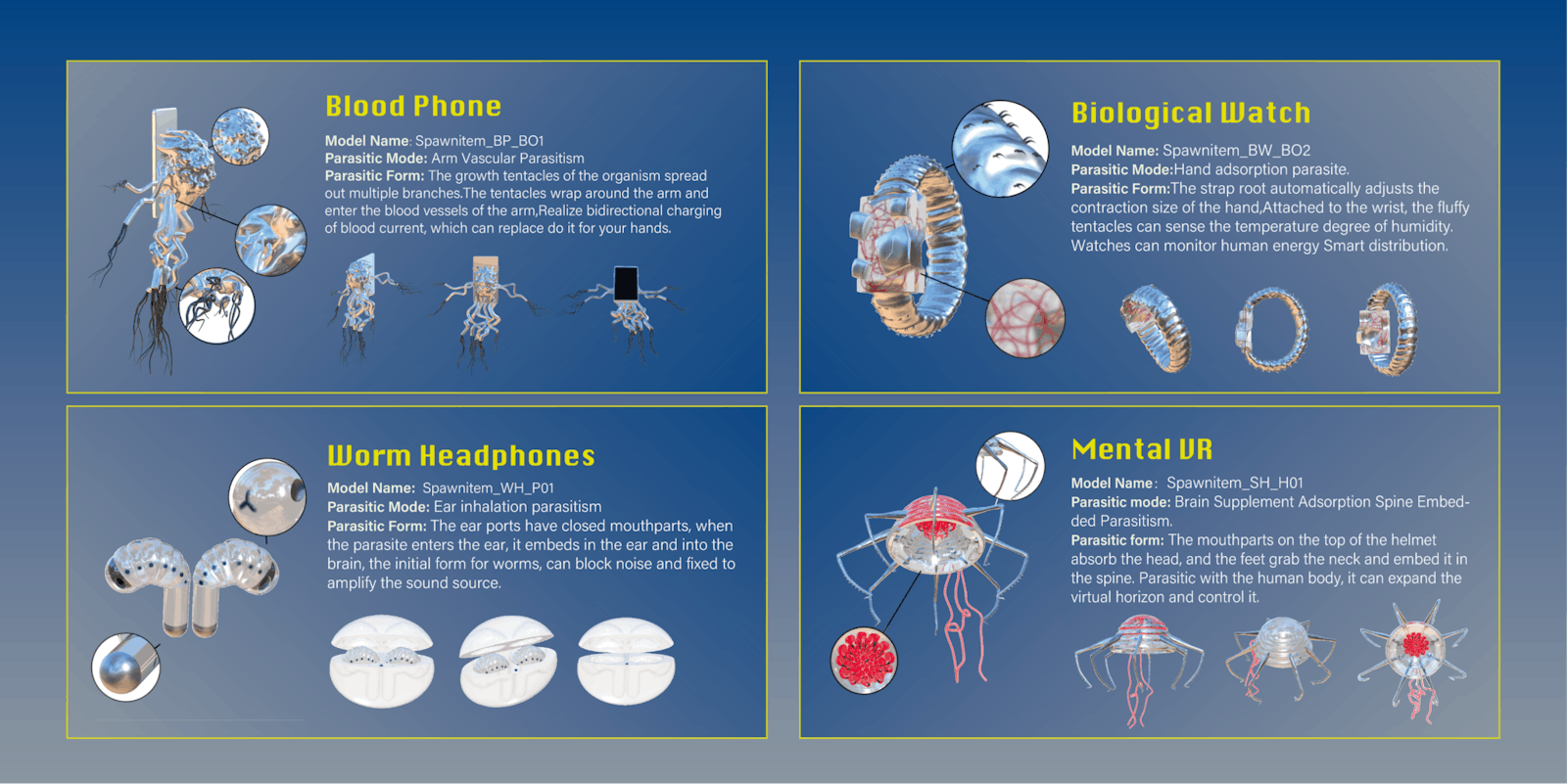
Three views of the model
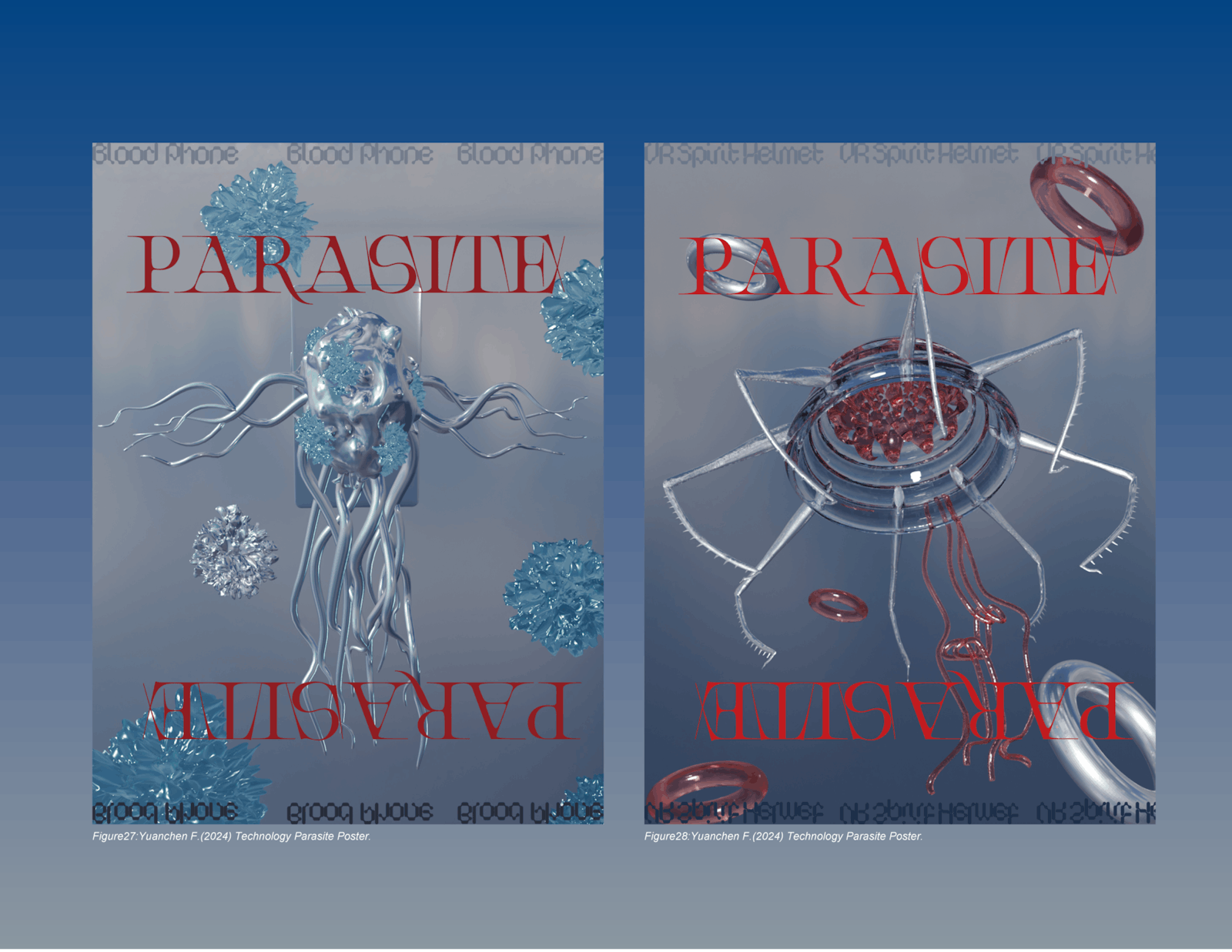
Technology Parasite Poster
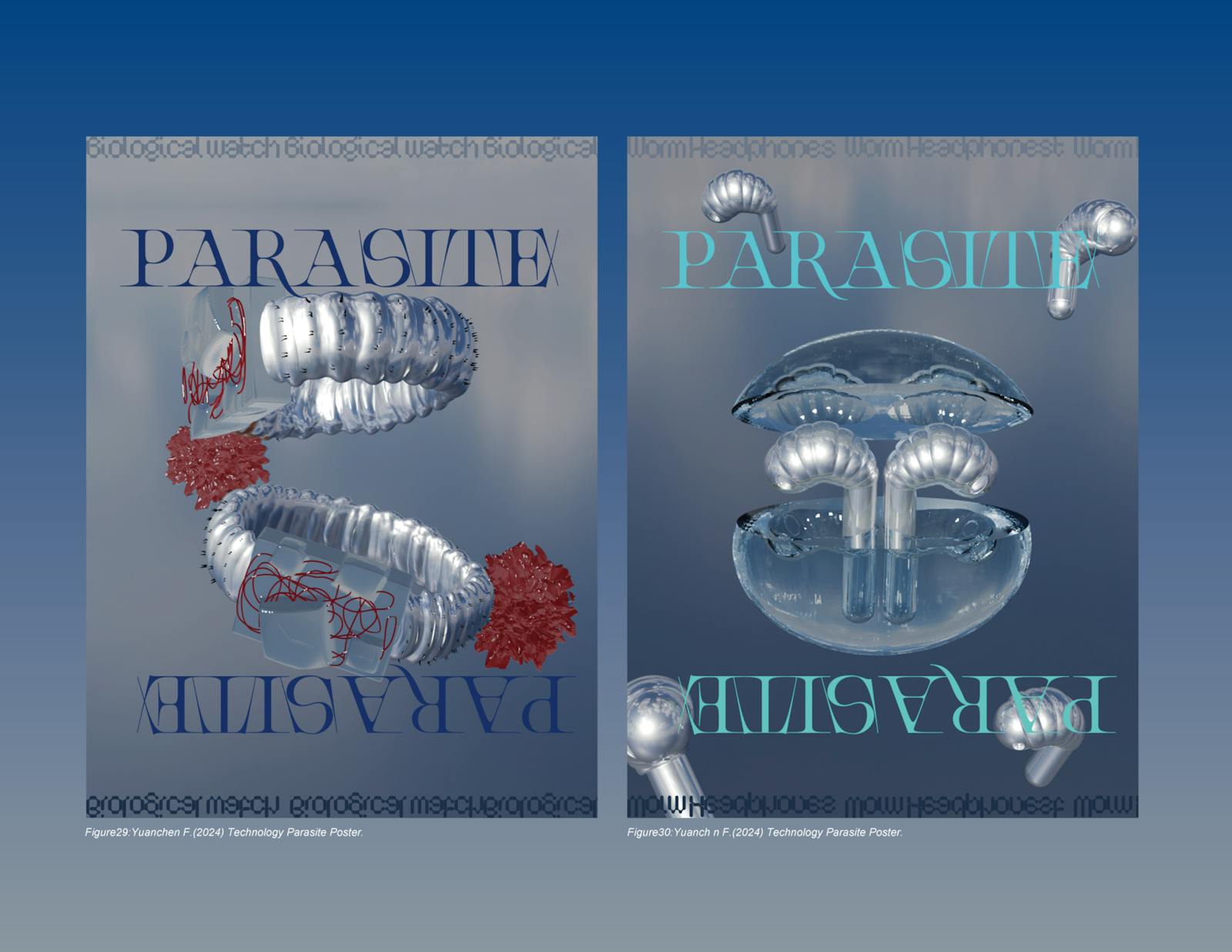
Technology Parasite Poster
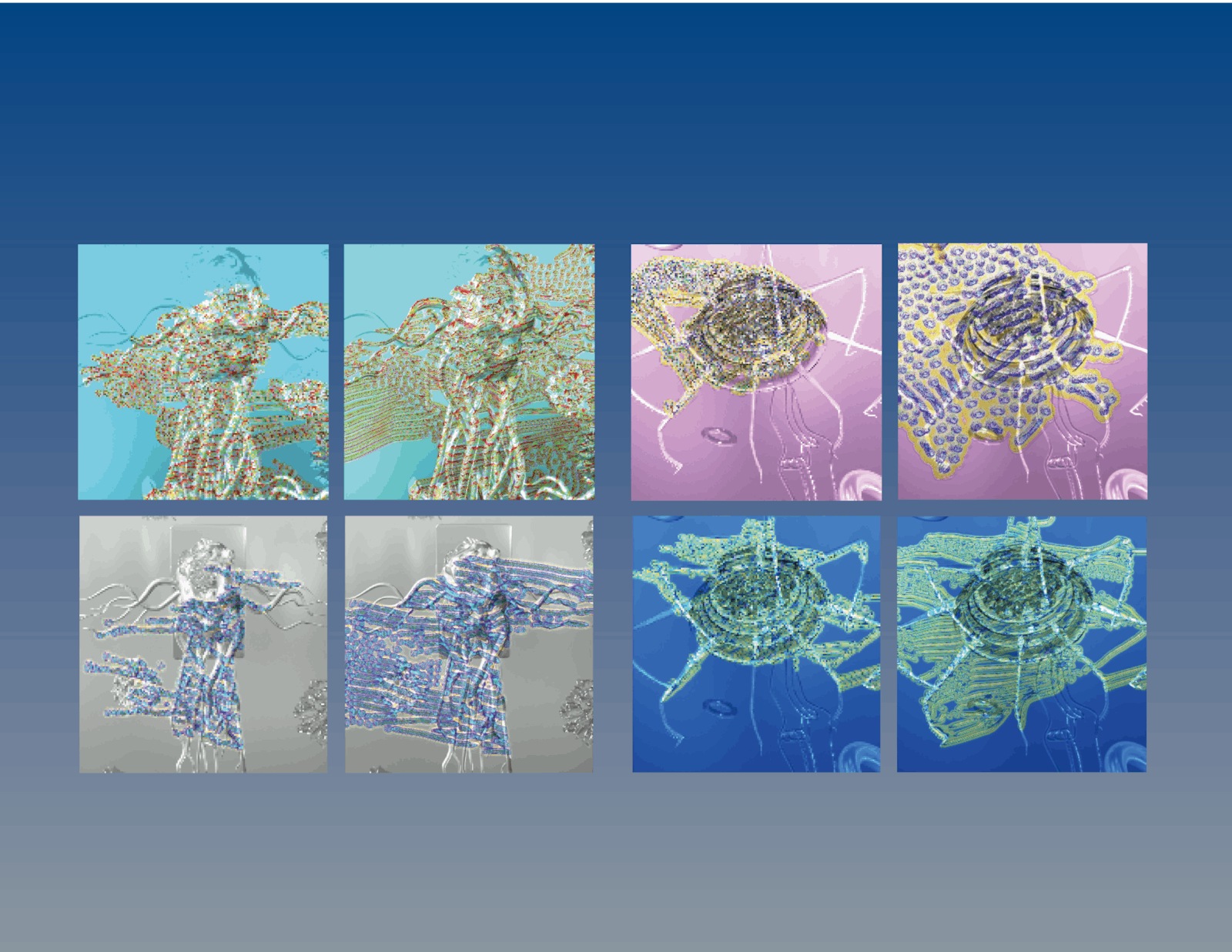
Flowing graphic visualization,Video Screenshots
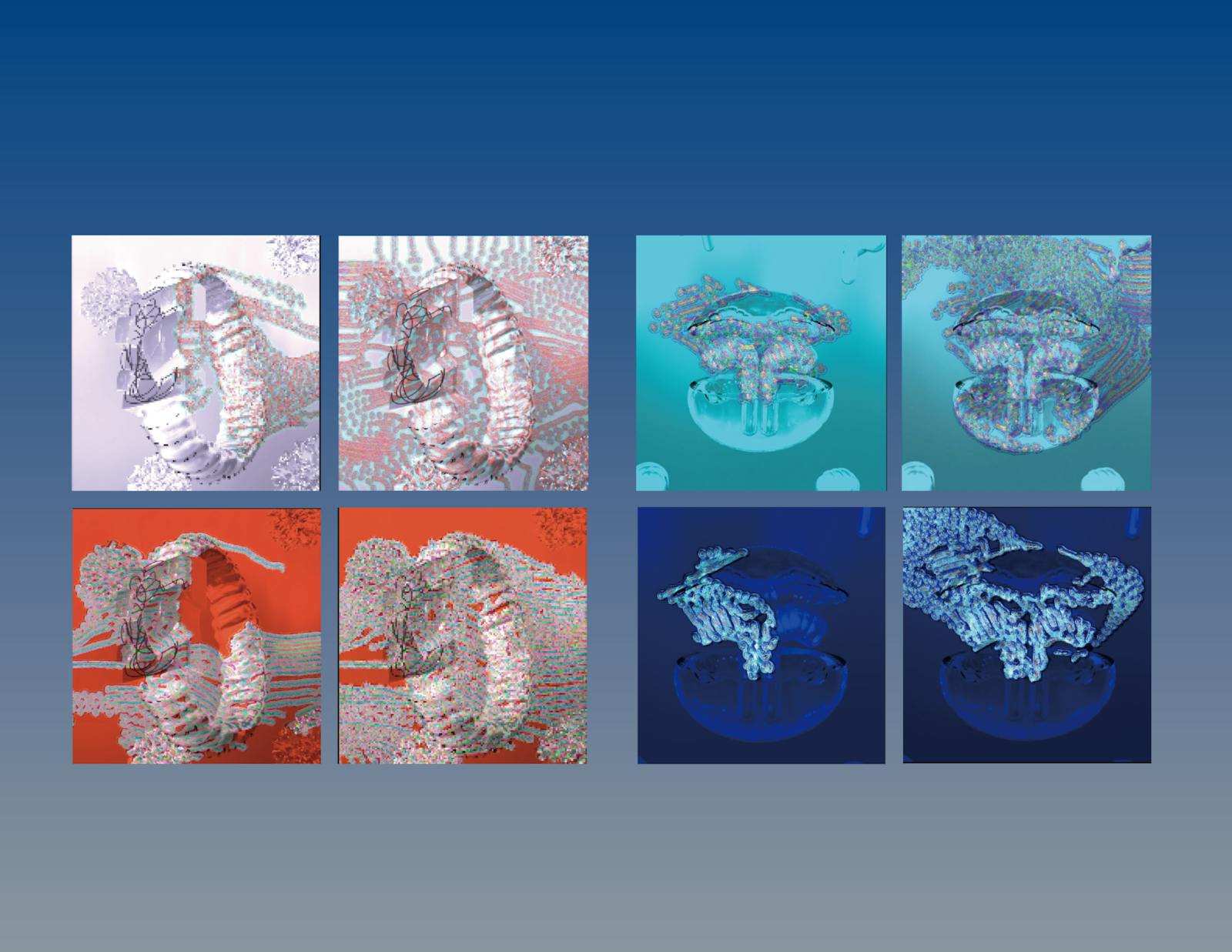
Flowing graphic visualization,Video Screenshots
This video, titled " Flowing " is a visual concept video based on technological parasitism models. It continues my interest in audience participation and interaction, using strong visual and musical effects to explore the theme of technological parasitism. The creation of the video was inspired by the four technological parasitism models I designed: Blood Phone, Bio Watch, Worm Headphones, and Mental VR. By incorporating these models into a dynamic and vibrant background, I aimed to enhance their visual impact and expressive power. The visual elements in the video continuously flow and transform, resembling the movement of cells or biological entities under a microscope, conveying the dynamic and spreading nature of parasitism.The flowing elements in the video mimic the movement and division of cells, enhancing the video’s dynamism and reinforcing the parasitic theme.
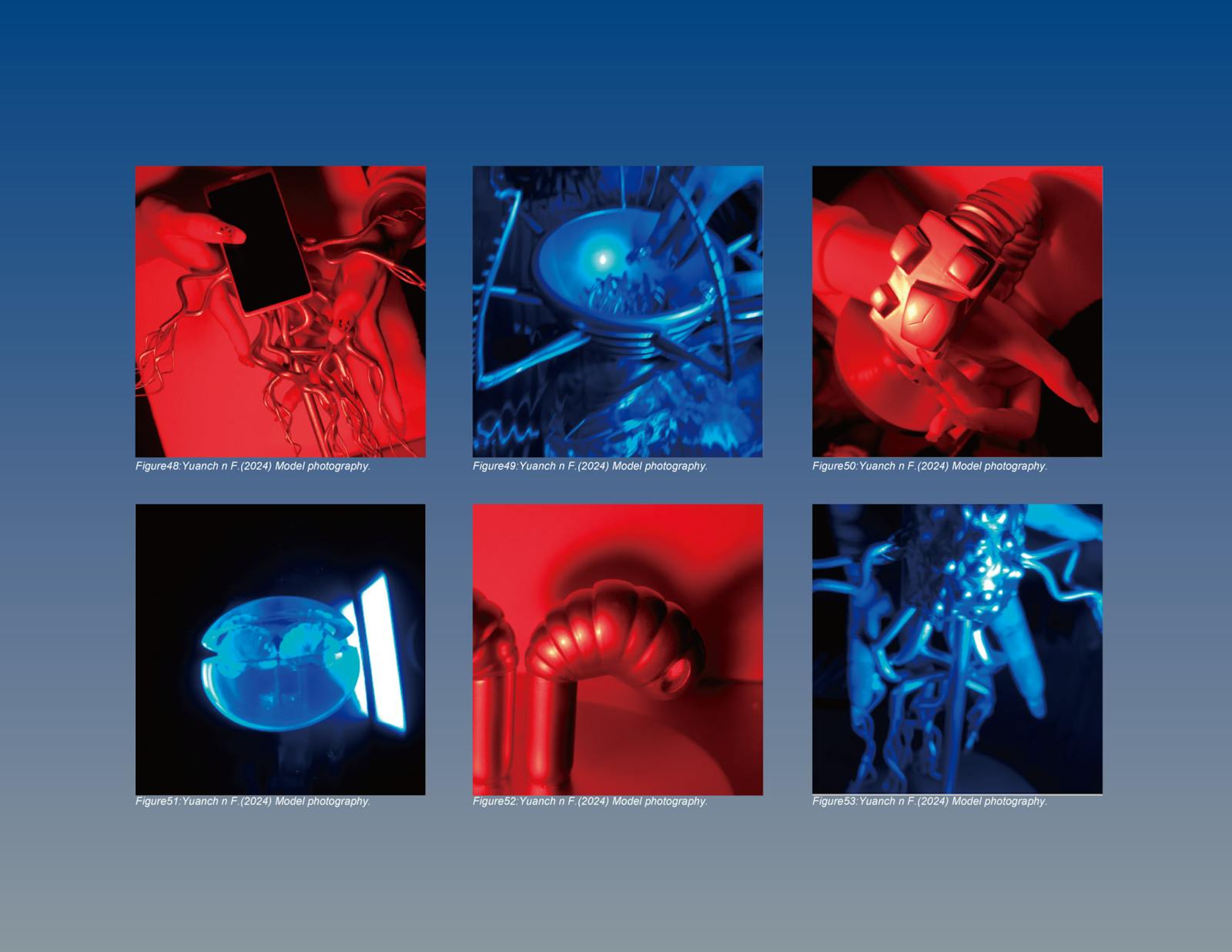
Technology Parasite Mode Photographs
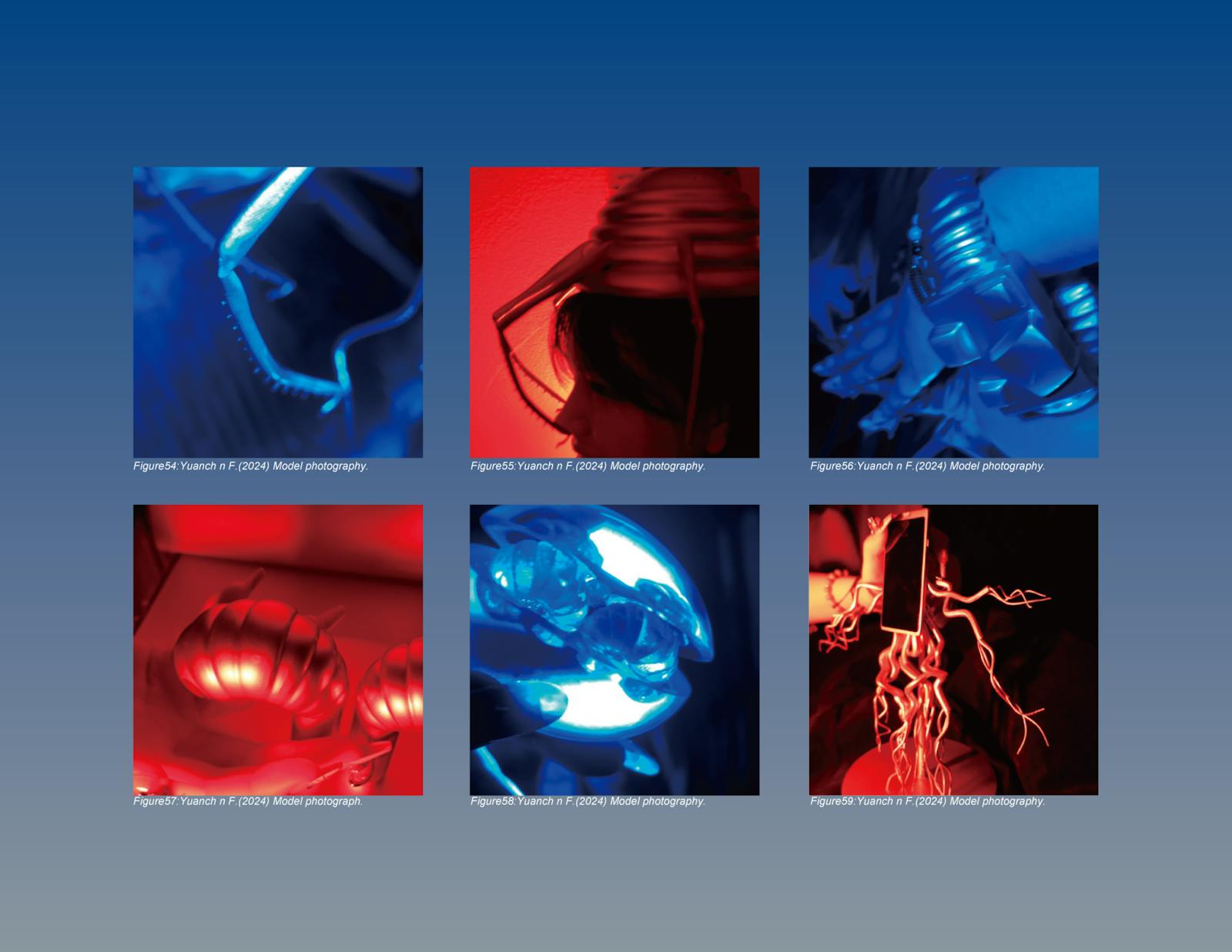
Technology Parasite Mode Photographs
